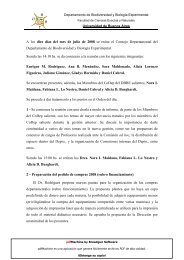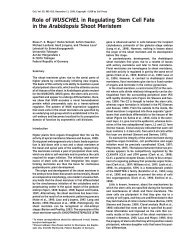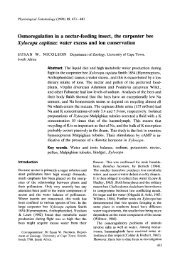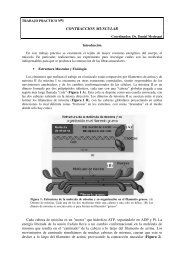The Aerobiology Pathway
The Aerobiology Pathway
The Aerobiology Pathway
Create successful ePaper yourself
Turn your PDF publications into a flip-book with our unique Google optimized e-Paper software.
Figure 2.8<br />
Changes in peak concentrations<br />
of pollen,<br />
Cladosporium spores<br />
and ‘damp-air type’<br />
spores at various altitudes<br />
over the North<br />
Sea downwind of the<br />
English coast, 16 th<br />
July 1964 (Gregory,<br />
1976: from Hirst and<br />
Hurst, 1967).<br />
6.3. Long distance dispersal<br />
Long-distance transport of fungal spores has been demonstrated by sampling air in<br />
regions that do not produce the spores e.g. the Arctic (Meier, 1935) and over the sea<br />
(Hirst and Hurst, 1967: Hovmøller et al., 2002). Hirst investigated the distribution of<br />
spores as affected by air mass movement in westerly winds. Spores were collected, using<br />
a volumetric suction trap fitted to an aircraft, during flights made from England, over<br />
the North Sea to the east. With distance, spore numbers were diluted and spores were<br />
found generally at progressively higher altitudes. It was possible to distinguish a time<br />
scale for spore dispersal due to the distribution of spore types released predominantly at<br />
night or predominantly during daylight (Fig. 2.8). Areas with a high density of spores of<br />
Sporobolomyces (Pl. 10.5) indicated the dispersal of night-time released spores, while<br />
pollens and Cladosporium spores (Pl. 11.1-2) indicated daytime discharge events (see<br />
Hirst et al. 1967a; Hirst, et al. 1967b; Hirst and Hurst 1967). Long distance transport<br />
of plant pathogens has been reviewed by Brown and Hovmøller (2002).<br />
Natural events that enhance long-distance transport of particles include biomass fires,<br />
which were reported by Mims and Mims (2003) to spread viable bacteria and fungal<br />
spores (Alternaria Pl. 11.3-6, Cladosporium Pl. 11.1 and 2, Fusariella and Curvularia Pl.<br />
11.16-17) large distances e.g. over 1450 km from Yucatan to Texas. <strong>The</strong> spores were<br />
associated with coarse carbon particles collected on microscope slides (e.g. Pl. 12.29)<br />
and to eliminate contamination by local spores, a passive air sampler was flown from a<br />
kite at a Texas Gulf Coast beach. Back-trajectory analysis of the wind showed that air<br />
was travelling from Yucatan, where numerous bush fires were in progress. <strong>The</strong> authors<br />
also reported collecting spores and carbon particles at Mauna Loa Observatory, Hawaii<br />
(elevation 3400 m) on 6 July 2003, when a large fire in S. E. Asia was in progress. <strong>The</strong>y<br />
speculate that convection from burning sugarcane at harvest may have helped to spread<br />
sugarcane rust (Puccinia melanocephala) from West Africa to the Dominican Republic<br />
in July 1978.<br />
Turbulent weather events are thought to assist in biological particles spreading long<br />
32 THE AIR SPORA



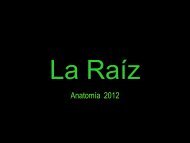
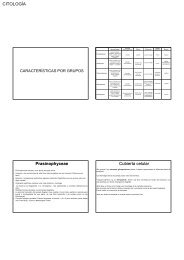


![Estructuras secretoras internas [4.64 MB]](https://img.yumpu.com/14294979/1/190x143/estructuras-secretoras-internas-464-mb.jpg?quality=85)
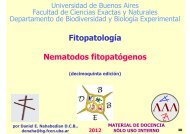
![anatomía y exomorfología [7.14 MB]](https://img.yumpu.com/12744163/1/190x143/anatomia-y-exomorfologia-714-mb.jpg?quality=85)
